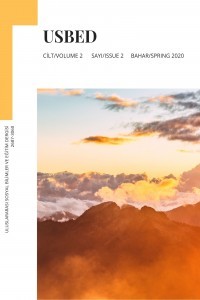Coverage of Women Issues in Sindhi Newspapers of Pakistan
Women issues are the most extensively increasing issue not only in Pakistan but globally as well. According to the Human Rights Commission of Pakistan (2020) women, related issues become higher in the country each year. The issues of women became serious, which need to resolve. With time, women's issues are now a critical matter, particularly in Pakistan. Therefore, the goal of the study is to interrogate the coverage of women's issues concerning the violation of fundamental rights in Sindhi newspapers of the country. For data accumulation, three Sindhi language dailies, Kawish, Ibrat, and Hilal-e-Pakistan, were drawn from 1st January 2018 to 30 June 2018 as a sample size. The quantitative content analysis method has been employed. The findings reveal that the Sindhi language newspapers report satisfactory coverage concern to the issues of women in Sindh province of Pakistan. In contrast to this finding, these newspapers have frequently reported the issues of violence against women as compared to education, health, and property-related matters of women.
Anahtar Kelimeler:
women issues, women rights, violence against women, sindhi newspapers
Coverage of Women Issues in Sindhi Newspapers of Pakistan
Women issues are the most extensively increasing issue not only in Pakistan but globally as well. According to the Human Rights Commission of Pakistan (2020) women, related issues become higher in the country each year. The issues of women became serious, which need to resolve. With time, women's issues are now a critical matter, particularly in Pakistan. Therefore, the goal of the study is to interrogate the coverage of women's issues concerning the violation of fundamental rights in Sindhi newspapers of the country. For data accumulation, three Sindhi language dailies, Kawish, Ibrat, and Hilal-e-Pakistan, were drawn from 1st January 2018 to 30 June 2018 as a sample size. The quantitative content analysis method has been employed. The findings reveal that the Sindhi language newspapers report satisfactory coverage concern to the issues of women in Sindh province of Pakistan. In contrast to this finding, these newspapers have frequently reported the issues of violence against women as compared to education, health, and property-related matters of women.
Keywords:
women issues, women rights, violence against women, sindhi newspapers,
___
- Adeniran, R. (2020). Gender Issues in Nigerian Newspapers Coverage of Maternal and Child Healthcare Issues. Communication Cultures in Africa, 2(1).
- Amenaghawon, F., & Salawu, A. (2020). Coverage of gender-based violence against women in indigenous language newspapers: a case study of Alaroye newspaper. Gender & Behaviour, 18(3), 16347-16358.
- Babbie, E. (2007). The practice of social research. Belmont, CA: Thomson Learning.
- Christmas, L. (1997) Chaps of Both Sexes? Eomrn Decision-makers in Newspapers: Do They Make a Difference? London: BT Forum/ Women in Journalism.
- Covert, C. L. (1981). Journalism history and women’s experience: A problem in conceptual change. Journalism history. 4, 2-6.
- Goswami, G., Dhawan, D., & Singh, A. R. (2010). Content analysis of women’s issues in newspapers. Rajasthan Journal of Extension Education. 18, 21-26. Retrieved from: http://www.rseeudaipur.org/wp-content/uploads/2013/02/05.pdf
- Human Development Index (2015) United Nations development program (UNDP). Oxford University Press. New York, NY: United States.
- Human Development Index (2020) United Nations development program (UNDP). Oxford University Press. New York, NY: United States.
- Human Rights Commission of Pakistan (2020) annual report.
- Kaur, R. (2013). Representation of crime against women in print media: A case study of Delhi gang rape. Department of anthropology. 2(1). Retrieved from:http://www.omicsgroup.info/representation-of-crime-against-women-in-print-media-acase-study-of-delhi-gang-rape-2332-0915.1000115.pdf
- Khalil, H., & Shafiq, M. O. (2020). Print Media Coverage of Women Issues; National and Regional Newspapers of Sindh and the International Perspective. Pakistan Journal of International Affairs, 3(2).
- Meyers, M. (1997). News Coverage of Violence against women: engendering blame, London: Sage. Mills, K. (1997). What difference do women journalists make? In P.Norris (ed) Women, Media and Politics, New York and Oxford : Oxford University Press. Pp41-55.
- Mughal, O. (2008). Sindhi Newspapers in Pakistan. Retrieved on http://pakistaniat.com/2008/10/24/sindhi-newspapers-in-pakistan/
- Nautiyal, V., & Dabral, M. J. (2012). Women issues in newspapers of Uttarakhand. Global MediaJournal-Indian Edition, 3(1), 1-10. Retrieved from www.caluniv.ac.in
- Nizamani, F.Q. (2018). A Critical Investigation of Parents' Self-Efficacy on Polio Messages: Political Hegemony and Digressive Role of Pakistani Television in Sindh, Pakistan. Ph.D. Thesis University Malaysia Sarawak (UNIMAS).
- Redaelli, S. (2019). Pakistan at 100. Retrieved on https://openknowledge.worldbank.org/handle/10986/31409
- Sangi, S. (2014). Sindhi media: Importance, opportunities & challenges. Paper presented at the 5th International Media Conference, Organized by the Department of Mass Communication, Federal Urdu University, Karachi.
- Shaikh, S. S., Qureshi, Z. A., & Muhammad, F. F. (2019). Coverage of Women Issues in Pakistan's Press: A Critical Analysis. Annual Research Journal Grassroots, University of Sindh, Jamshoro. Vol.53, No II. Retrieved from: https://www.researchgate.net/publication/342448481_COVERAGE_OF_WOMEN_ISSUES_IN_THE_PAKISTAN'S_PRESS_A_CRITICAL_ANALYSIS
- Sheikh, S. S., (2017). Women Rights and Pakistani Press: A Case Study. PhD thesis, Department of Mass Communication, University of Karachi (Sindh) Pakistan.
- Sontheimer, M. (1941). Newspaperman. A Book About the business, New York: McGraw-Hill.
- SN Tahir, G Mojiz . (2006). Women, Globalization and Mass Media: Perspectives from Pakistan. Women, Globalization, and Mass Media: International Facets of Emancipation, pp131.Retrievedfrom: https://scholar.google.com.pk/citations?view_op=view_citation&hl=en&user=cS-UOVEAAAAJ&citation_for_view=cS-UOVEAAAAJ:UeHWp8X0CEIC
- Zafar, F. & Sehgal, R. (1996). A summary of Pakistan’s national report. Paper presented at fourth World Conference on Women, Islamabad.
- Başlangıç: 2019
- Yayıncı: Aytekin DEMİRCİOĞLU
Sayıdaki Diğer Makaleler
The Problems of European Identity and the Brexit
Dian RİF'İYATİ, Aan Fadia ANNUR, Muhammad FAJAR
Historical Memory in Eurosceptic Discourse
Kostyantyn BALABANOV, Kostiantyn KARAMAN
Prejudice and Equality – In Search of Purpose- Driven Interdisciplinary Methodologies in Academia
Regional Trends of Compulsory Voting
Coverage of Women Issues in Sindhi Newspapers of Pakistan
COVID-19 Süreci ile Eğitimde Paradigma Dönüşümü: Etkili Uzaktan Eğitim Sistemi
Hamiyet SAYAN, Nadire Gülçin YILDIZ
